Stop overpaying - start transferring money with Ogvio. Sign up, invite friends & grab Rewards now! 🎁
So, you know the basics of trading crypto in the spot market, and you want to set a bigger challenge for yourself. As you’ve scoured the internet, you’ve probably come across numerous terms and concepts that have piqued the interest of your inner trader. Today, we’ll cover one of them and answer the question: what is leverage trading crypto like and what role does it play in different markets?
For starters, we’ll define what crypto trading with leverage is and how it relates to the concept of margin trading. Then we’ll take a look at how leverage can be used in spot and derivatives markets. If you’d like some background knowledge before you take a deep dive into leverage, you can find our guides on how spot trading works and what margin trading is.
Finally, since leverage trading is a risky business, I’ll offer you some tips and tricks that may help you keep your assets safe even when a trade goes south. Specifically, we’ll focus on how the process works on Binance and Kraken exchanges, especially when it comes to crypto leverage trading USA clients.
Without further ado, let’s start learning about leverage.

Did you know?
Subscribe - We publish new crypto explainer videos every week!
What is an NFT? (Explained with Animations)


Table of Contents
- 1. What is Leverage Trading in Crypto: Key Terminology
- 1.1. Leveraged Tokens
- 1.2. The Pros and Cons of Crypto Leverage Trading
- 2. How Does Leverage Crypto Trading Work in Spot?
- 3. How Does Leverage Crypto Trading Work in Derivatives?
- 4. Leverage Risks and Damage Control
- 4.1. How to Limit the Risks of Leverage Trading Crypto?
- 4.2. Crypto Leverage Trading USA Regulations
- 5. Conclusions
What is Leverage Trading in Crypto: Key Terminology
Even though this concept is used more commonly by experienced traders, answering the question of “what is leverage trading crypto like” is not as complicated as it may first seem.
Latest Deal Active Right Now:Leverage is a term you’ll often see mentioned hand in hand with margin. In fact, many people assume that the two are synonyms. Although margin trading is referred to as leverage trading or leveraging, margin and leverage are not interchangeable terms. Essentially, leverage is a trading instrument used to enable margin trading.
This is the trickiest part, so let’s take a look at an example. Let’s say that you want to buy Bitcoin (BTC). It’s currently worth around $10,000, but your account only has $5,000. What can you do? Well, you can wait for the price to drop – or you can take out a loan. If you choose the latter and open a margin trading position, you’ll have leverage – 2x leverage, to be exact.
2x or 2:1 leverage means that half of your assets are loaned while the other half is yours. If your trade is executed successfully, you’re going to earn BTC. However, if the margin level goes below what you’d anticipated, you’ll be issued a margin call. Then, you can either add more of your funds to rebalance, or you’ll be forced to liquidate.
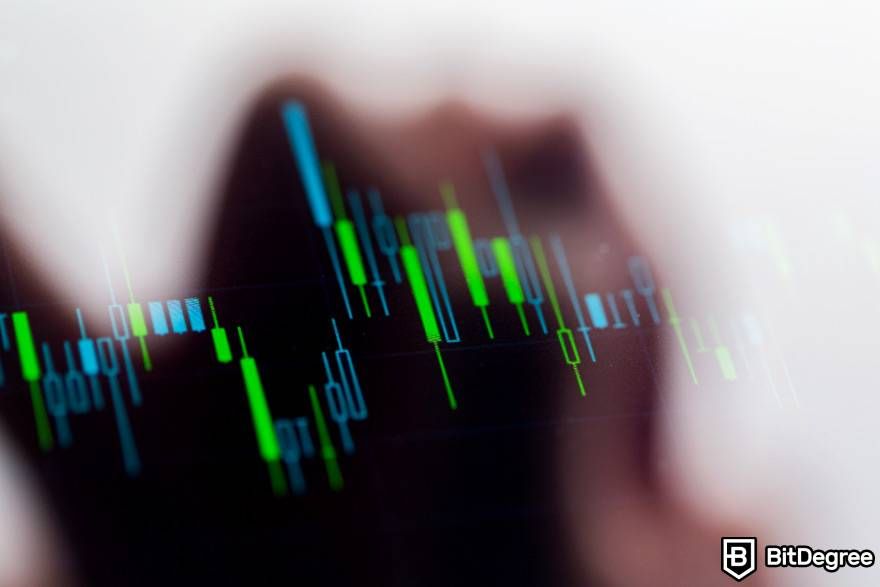
We won’t delve too deeply into margin trading, but if you want to learn more, you can find our guide here. In our margin example, the leverage has a 50/50 chance of either succeeding or falling through, depending on the market trends. But if you were to take out a loan that covers, say, the vast majority of the asset price, you’d deal with a 10x leverage – and your chances of the trade going either direction would increase tenfold.
As you can see, crypto trading with leverage is a risky business. So, it's often recommended to get some spot trading experience first – learn to work with technical indicators, track market performance, and even compare different trading platforms. In many cases, you'll be able to use demo trading to practice with leverage first.
Demo trading is a feature that's perfectly described by its name. Essentially, you can enter a virtual trading environment that allows you to open positions, track live data, and apply your strategies – without putting any real assets forward. It's a risk-free way to practice your trading skills and gain more experience. Often, you'll find demo crypto leverage trading for futures markets.
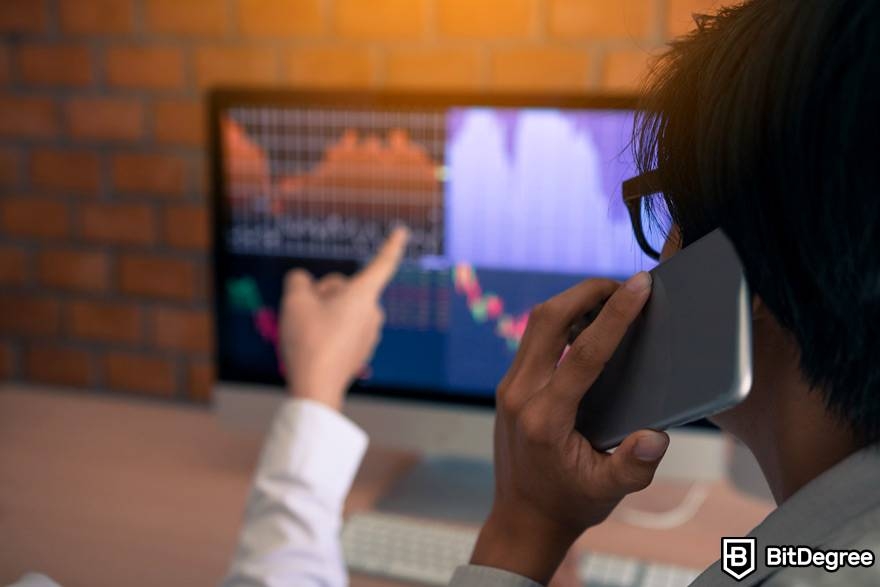
If you’ve dabbled with traditional markets, you can probably tell that there are no big differences between what is leverage trading in crypto compared to more conventional stock trading. What sets the two aside are features of crypto itself – the assets are fully digital, even including tokenized stocks in some cases.
Let's take a look at one of the most unique inventions in terms of what is leverage trading in crypto – leveraged tokens.
Leveraged Tokens
Over the years, a new concept of leveraged tokens has emerged. Just as you can trade assets like Bitcoin, Ethereum, or Tether, you can also spot strange names in the market like 3X Short Ethereum – now you know what they are.
Leveraged tokens are assets developed using the ERC-20 standard. As such, they act like other Ethereum-based tokens, although they have a very specific utility. They can be considered pretty niche, so if you've only casually dabbled in crypto so far, it's possible you haven't heard of them before.

While we’ll be taking a closer look at the risks posed by leverage trading later on, I can note that leveraged tokens are considered one of the many risk management tools. They’re developed to automatically reinvest your profits, and if a margin call is close to being issued, they can sell as required to avoid forced liquidation.
Another thing that reduces the risk is that you don't need to put up collateral to use leveraged tokens. Since they can rebalance automatically, their value can be impacted by sudden market movements in either direction. Unlike regular ERC-20 tokens, you usually can't withdraw them to your wallet, and holding them might charge you additional fees.
Centralized cryptocurrency exchanges that offer crypto trading with leverage, such as Binance, often offer leveraged tokens as a simplified trading method. Having these tokens lets you gain leveraged exposure to assets that you otherwise wouldn't be able to trade. The availability of trading pairs that use leveraged tokens will also depend on your trading platform of choice.
The Pros and Cons of Crypto Leverage Trading
As you're taking all the facts of what is leverage trading in crypto into account, you should weigh your options and decide whether this method of trading is worthwhile for you. While the prospects of earning big can be tempting, let's take a look at how effective it really can be.
For starters, let's see the two positions (or strategies) that traders might choose to hold when engaging in crypto trading with leverage:
- Shorting – the position you place when you expect the asset's price to decrease over time. Short traders expect to sell the tokens at a low price and then return the borrowed funds to the lenders;
- Longing – the position you place when you expect the asset's value to increase over time. By holding the asset, or going long, traders expect to sell the tokens for more than they were worth at the time of the trade. By making a profit, they can start paying back their loans.
In either case, as with all modes of trading, the final goal of leverage trading is to increase your total asset value. By employing leverage, experienced traders can gain an advantage if their positions play out the way they'd expected. So, for many, the answer to what is leverage trading in crypto is – a good strategy to increase your profits.
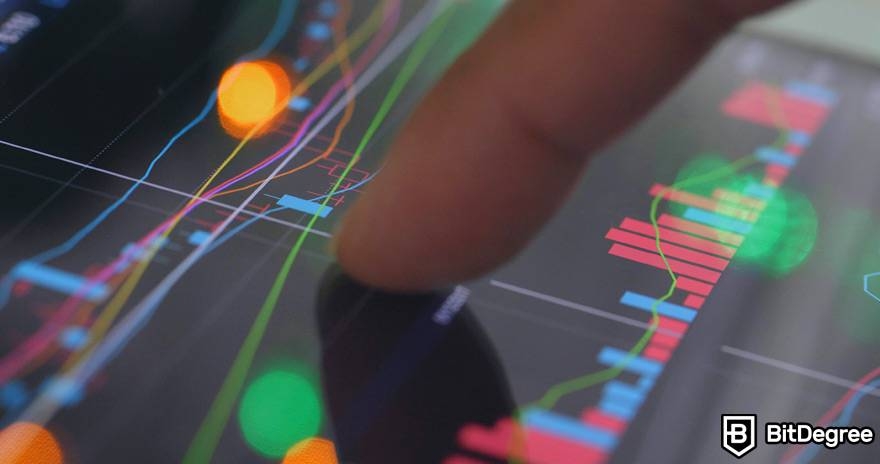
That said, crypto trading with leverage is far from a "get rich quick" scheme. It takes a lot of calculation, risk, and market experience to get it right – and even then, success is not always guaranteed. Leverage can multiply or decrease the outcome of a trade, so balance is key here – and mastering it isn't something many traders can do in a day.
Another matter is the expenses of crypto leverage trading. Whether you're trading margin or perpetual contracts using leverage, borrowing funds comes with its own extra costs. Holding a position for a prolonged time can also require daily fees. So, some traders may run out of funds simply by opening too many positions that they can't pay to keep running.
So, let's have a quick rundown of the pros and cons of crypto leverage trading:
| PROS | CONS |
| Profitable for experienced traders | Complicated for beginners |
| High-reward | High-risk |
| Applicable to spot and derivatives markets | Additional fees |
| Leveraged tokens can be used | Requires understanding of technical indicators |
Table: The pros and cons of crypto leverage trading
With the key aspects of what is leverage trading crypto out of the way, let's take a look at how this strategy plays out in the context of spot and derivatives markets.
How Does Leverage Crypto Trading Work in Spot?
Even if you're only just getting started with trading, you probably already know about the spot market. It's the most straightforward method of trading that's offered by virtually all centralized cryptocurrency exchanges.
Spot markets function using an order book. One trader places an order stating that they want to buy a certain asset for a certain price, while another places an order selling said asset. The two orders are then matched, and the transaction is executed almost instantaneously. Of course, there are some more nuances to this way of trading, and you can learn all about it in our guide to spot trading.
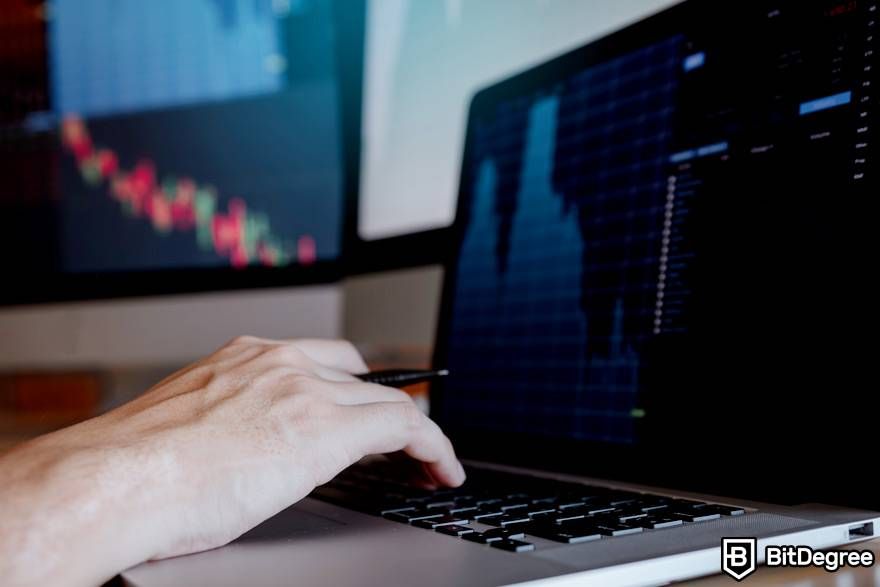
Spot trading is typically done using your own assets rather than borrowed funds. Traders that borrow to gain leverage may trade using the same markets as spot. However, trading with leverage in this way is less accessible than regular spot trading, since it's more regulated and is seen as riskier.
Here's where the leveraged tokens we've discussed come in. They can be listed on an exchange alongside other assets, such as Bitcoin, Litecoin, or Cardano, and traded using the same order book that the spot market uses. So, it's one example of seeing what is leverage trading crypto like on the spot market.
That said, while trading in the spot market environment may feel more familiar, it's nonetheless considered a more advanced trading strategy. So, before you jump in, you might also familiarize yourself with our selection of the top five best trading strategies.
How Does Leverage Crypto Trading Work in Derivatives?
Derivatives markets are a very complicated can of worms when you first look into them. They branch out to smaller subsections, like options, futures, and perpetual contracts. So, before we see what role trading crypto with leverage plays here, let's define these three types of derivatives trading:
- Options – contracts between traders to sell an asset at a predetermined time and price. Options contracts are non-binding, meaning that the buyer and the seller have the right to decide if they want to exercise their option when the time comes;
- Futures – similar to options, these contracts are used to agree on how much an asset is going to be sold for and when. However, these contracts are legally binding, meaning that the parties must execute the trade on the set date;
- Perpetuals – perpetuals are a type of futures contracts. Unlike quarterly futures, which have an expiration date, perpetual contracts do not have a settlement date.
In terms of leverage, the contract type you'll come across mentioned the most frequently is perpetuals.
There is a massive difference between what is leverage trading crypto like if you're going for margin, and how it works with perpetual contracts. And I mean "massive" literally here. Platforms that enable margin trading, such as Kraken, may limit the amount of leverage you can have – for example, no more than 5x or 10x leverage. This is done to reduce the risk and protect customers' assets.
It's a different game when it comes to perpetual contracts, though. These markets are highly speculative. So, don't be surprised if you come across numbers like 100x, 125x, or even 200x leverage. As you can see, perpetual contract trades are even higher-risk than margin.
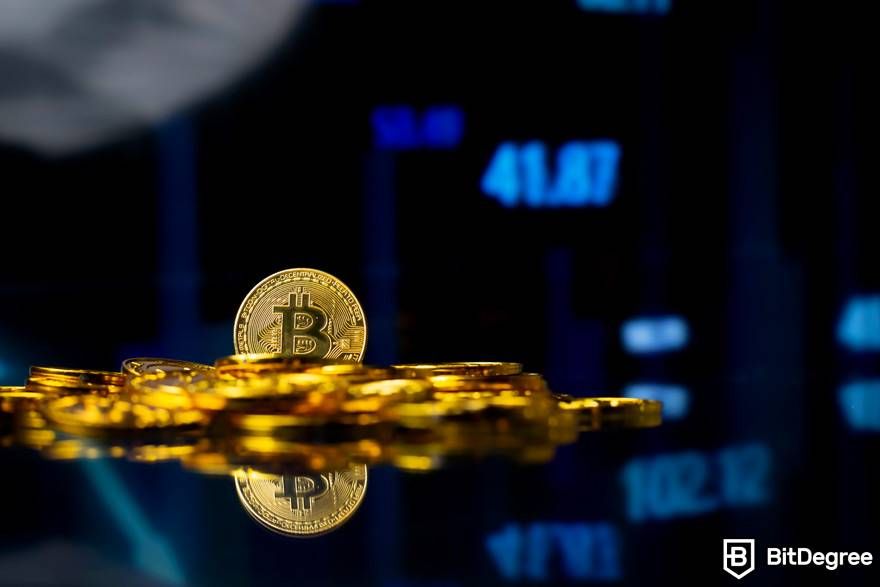
Essentially, perpetual trading with leverage could probably be considered one of the riskiest means of trading. While the multiplier can be immense if the trade goes well, there is a greater chance of a margin call, especially if the asset you're trading is highly volatile (as many crypto assets tend to be).
Leverage plays an important role in strategizing to maximize profits and minimize losses for experienced traders. Even if you're not considering getting into this playing field any time soon, understanding how it may differ based on your chosen market – whether that's margin in spot or derivatives contracts – is useful to keep in mind once you decide that the time is right to jump in.
That said, since I keep mentioning how high-risk this tool is, let's move on to our next big question – what is leverage trading crypto risk management process like?
Leverage Risks and Damage Control
Damage control might sound a bit dramatic. However, when it comes to figuring out what is leverage trading in crypto, you cannot overlook the hazards of this instrument. Whether you’re trading margin or perpetual contracts, leverage can turn into a dangerous game.
As I've emphasized many times throughout this article, leverage trading crypto is a high-risk, high-reward endeavor. Many markets that enable leverage trading are considered speculative, which means that leverage often goes hand in hand with strict regulations. Combine this with the volatility of crypto in general – there's no venturing into this service if you don't have your risk management tools at the ready first.
How to Limit the Risks of Leverage Trading Crypto?
You shouldn't get too spooked by the leverage trading risks, of course. Being rational and reasonable are the core qualities of any good trader, so you should have your plans from B to Z ready before you even open your first position.
Even though crypto trading with leverage isn't as widely available as basic spot trading, there are both traditional and crypto market strategies that can help you out, so there's no need to panic even if the markets start looking less favorable.

First and foremost (and it might seem very obvious) – don't make rash decisions. This can mean a number of things:
- Don't trade beyond your means;
- Don't open too many positions impulsively;
- Don't go all in.
Staying rational can be crucial in markets that change as rapidly as crypto. How much you invest can be as big of a factor when it comes to increasing and decreasing your risk. Remember – you're already taking out a loan to trade with leverage. Each open position will cost you extra. So, be mindful of your funds and make sure you don't end up with a negative balance.
In general, it's recommended that you trade around 1-2% of your overall portfolio value, and it's advised not to exceed the 5% threshold. Keep in mind that if a position doesn't go your way, you might get a margin call. So, to avoid forced liquidation, keep some assets to the side to cover the potential losses.
Most exchanges, such as Binance and Kraken, will help you out with this one by default, by keeping your spot trading funds and the funds you'll be trading with leverage separate. The platforms I mentioned allow you to open separate accounts to keep them from getting mixed up, and if you need to transfer them from one to the other, you can do so simply and without additional fees.
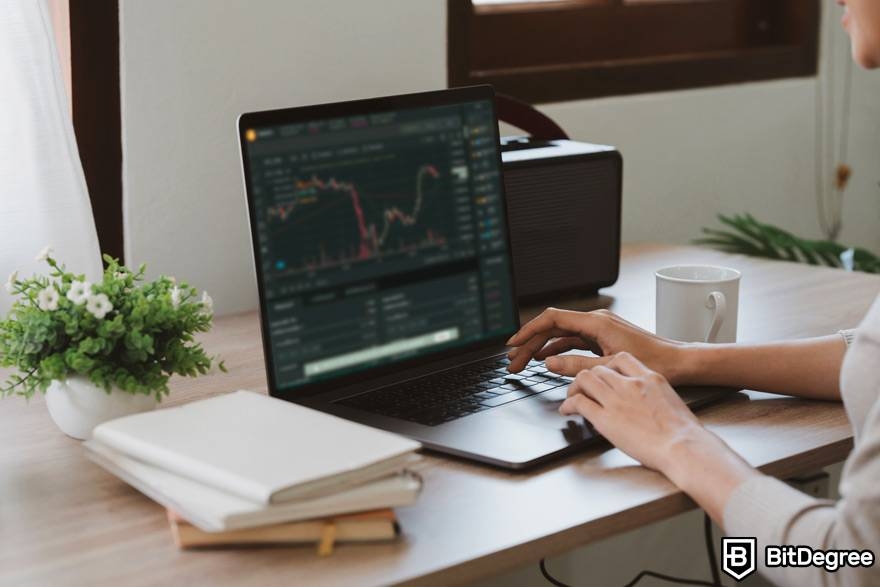
Following the hype can be effective in the short term. However, if you're aiming to hodl, you're going to need to do a lot of research. Of course, looking into the history of a trading pair alone won't be enough if some unexpected breaking news flips the market upside down. However, you shouldn't blindly follow the market trends just because a friend of a friend told you to.
Don't lose your head if things don't go as planned. It's very easy to fall into the rabbit hole of revenge trading in an attempt to win back all you've lost, and then some. However, if the market trend seems to be red, it might be better to wait it out and focus on safer options.
Speaking of safer trading decisions – if you're just getting started, start slow. Sure, if you're trading perpetuals, it could be tempting to test out the 100x leverage pair. However, it's going to be more worthwhile to start with a smaller margin, like a 2x leverage, and work your way up from there to gradually increase the sum that you're putting on the table.
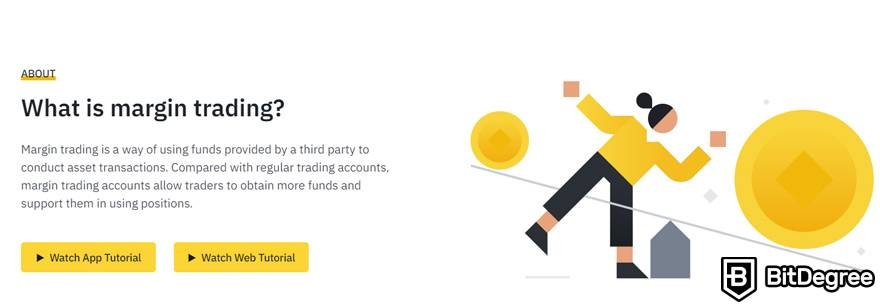
Of course, you shouldn't forget the tools you have at hand. Crypto exchanges offer a broad range of technical indicators and market tracking tools that can be essential in securing your position. Additionally, you'll be able to set up features like stop-loss to automatically buy and sell your position at your preferred prices.
One last thing – don't lose the track of time trading non-stop. This is something that the platform itself might help you with, too. For example, Binance crypto leverage traders are familiar with the platform's cooling-off period. This feature automatically limits the amount of time you spend trading to ensure you don't place positions excessively.
While there are tons more strategies, these are some of the key ones to keep in mind if you're interested in what is leverage trading crypto like. You can also find some additional tips in our guide to margin trading. And if you feel like I've missed anything important, feel free to share your own experience in the comment section below.

- Secure and reliable
- Accepts fiat currencies
- Lots of trading options
- Reputable exchange
- Accepts fiat currencies
- Offers various trading options

- Huge trading variety
- Regulation-compliant around the globe
- Fair trading fees
- Beginner-friendly
- A wide array of features
- Vast number of different crypto coins & tokens

- Beginner-friendly
- Secure
- Decent trading and withdrawal fees
- Crypto.com Visa Card
- Automated tools & bots
- Ecosystem synergy with CRO
Crypto Leverage Trading USA Regulations
Trading crypto with leverage might seem like a profitable, albeit risky, endeavor. That said, it’s not the easiest one to approach. For starters, due to its complexities and the amount of monitoring and risk management tools involved, it’s more prominent among experienced traders. It’s also one of the most strongly regulated means of trading.
Following the 2008 financial crisis, governments in numerous countries started implementing measures for stricter regulation on margin trading. With the emergence of crypto, trading with leverage entered the regulators’ spotlight.
As you may already know, the crypto industry is volatile, which amps up the risks posed by leverage crypto trading. You have to think not only about the usual risks associated with margin or futures trading, but also about the asset prices that can change in a matter of seconds – making it stressful for traders everywhere.

Then there’s the matter of market manipulation – in the crypto space, where trading takes place 24/7, a single tweet or an unexpected news report can flip the entire market sentiment upside down. So, it’s not necessarily perceived as the most reliable of markets by regulators.
This means that the perception of what is leverage trading in crypto can be negative – and the policies reflect it. Many countries have outright banned certain trading modes, such as margin. For example, Canada announced a complete ban on margin and leverage crypto trading following the collapse of FTX in late 2022.
The crypto leverage trading USA regulations are also known for being pretty strict. Of the very short list of platforms that offer leverage trading worldwide, the US-based list is even shorter – Kraken is the prominent name here.

Here are some of the criteria you must meet to qualify for Kraken crypto trading with leverage:
- You must be at least 18 years old;
- You must be a proven US resident;
- You must be a self-certified Eligible Contract Participant (ECP)
ECP certification has requirements of its own that you must adhere to related to your total asset value. Once you meet all requirements, you can start trading.
What is leverage trading crypto process like on Kraken? Well, it doesn’t differ much from other platforms that provide this service outside of the US. Customers that choose to trade with leverage can set up a stop loss to reduce the risk of liquidating assets. Kraken allows up to 5x leverage in margin trading.
As you can see, while crypto leverage trading in the USA is not unheard of, it can be very difficult to access. So, make sure to familiarize yourself with the policies and requirements before you start.
Conclusions
Now that we've reached the end of our guide, let's answer this question once and for all – what is leverage trading crypto like? It's the result of borrowing assets to trade cryptocurrencies. Leverage is used to see by how much your trade will multiply if it succeeds or how much your losses may account for if the price drops.
While leverage is a tricky, high-risk tool, you can easily find resources to learn to use it without experiencing big losses – demo trading can help you with that. And if you want to master your spot trading skills first, we can help you out – you'll find our spot trading guide here.
Keep in mind that the risk of trading crypto with leverage or without is never zero, so take measures and develop strategies to ensure your assets are as safe as they can be – and, of course, never trade beyond your means.
I hope this guide has been helpful for you in figuring out what leverage trading crypto is. Good luck in the market, and trade safely!
The content published on this website is not aimed to give any kind of financial, investment, trading, or any other form of advice. BitDegree.org does not endorse or suggest you to buy, sell or hold any kind of cryptocurrency. Before making financial investment decisions, do consult your financial advisor.









